Why Bitcoin Keeps Changing Its Mind: Impact of Bitcoin's SegWit and Taproot Upgrades?
Discover the transformative journey of Bitcoin through its major upgrades. From hard forks like Bitcoin Cash to soft forks like Taproot, learn how each has shaped the blockchain's future.

The only thing that is certain is that things are constantly changing, and even Bitcoin isn't an exception to this. Despite being, according to some, perhaps the most significant change in the financial world, it has also been forced to continually evolve with changing times to remain relevant. One way to achieve this has been through upgrades.
Join us in this article as we embark on a journey of major Bitcoin upgrades under different forks, their development journey, and the future impact they hold for the network and perhaps the entire crypto community.
What Are Bitcoin Upgrades?
To start, Bitcoin upgrades are protocol improvements to Bitcoin that enhance the functionality of the blockchain. These upgrades usually involve updates to its codebase implemented through consensus among its community and are born through the Bitcoin Improvement Proposals or “BIPs”.
Bitcoin Improvement Proposal is a standardized way to pitch any change to how the Bitcoin blockchain works. It allows the community to communicate ideas, draft and propose technical changes, and eventually vote on accepting or opposing the proposal - CoinDesk.
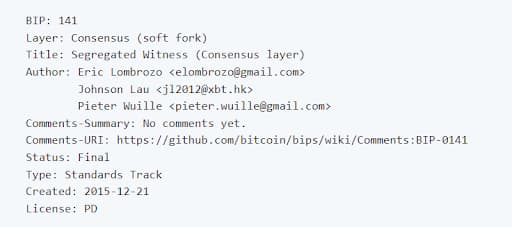
Bitcoin upgrades come in two forms: soft forks and hard forks (which we will give examples of later). You might be wondering, where did the word "fork" come from?
Well, its origin dates back to one of its earliest documented mentions in Bitcoin by developer Gavin Andresen (the then-lead developer of Bitcoin), who referenced forks while discussing protocol changes around 2012.
Bitcoin Hard Fork
A hard fork refers to a change to Bitcoin’s protocol that requires all network participants to upgrade to the new rule set and reject the old ones. This mostly results in a disagreement among network participants causing a division into two branches: one that follows the old protocol and another that follows the new.
Essentially, hard forks result in a new blockchain and with its native token, as we will see later. This means that they can proceed regardless of opposition from the community since they are no longer compatible with the main blockchain.
Examples of hard forks include Bitcoin XT, Bitcoin Classic, Bitcoin Unlimited, Bitcoin Cash, and Bitcoin Gold.
Bitcoin Soft Fork
On the other side, a soft fork provides backward compatibility. This means it allows older nodes to continue participating in the network even if they do not upgrade to the new one.
This is achieved by making the new rules a strict subset of the old rules, ensuring that nodes running the older version will still recognize the new one as valid. They are usually used to add new features and functionalities to the Bitcoin network.
Examples of soft forks include SegWit and the Taproot Upgrade.
As opposed to hard forks, soft forks require the agreement of network participants before activation since they affect the main Bitcoin network. At least 95% of the last 2,016 miners (14 days' worth of mining with 10-minute blocks) must show support, and if this isn't reached, the activation fails.
On the contrary, in an event where a reasonable motive is given, a lower threshold can be used, as was the case on the Taproot Upgrade which we will discuss later.

With the two forms/forks in mind, let's have a look at some of the major Bitcoin upgrades...
A Timeline of Major Bitcoin Upgrades
Hard Forks
Bitcoin XT
This was perhaps the first major Bitcoin upgrade since its inception. It was introduced in 2014 by developer Mike Hearn, with an aim to increase transaction speed from the previous 7 transactions per second (TPS) to 24 TPS. To accomplish this, Hearn proposed raising the block size from 1MB to 8 MB.
The upgrade initially saw some success but eventually lost favor among Bitcoin developers who abandoned it quickly, which made its developer exit the space, leading to the collapse of the proposal.

Bitcoin Classic
After Bitcoin XT collapsed, Bitcoin Classic, another upgrade with a similar aim to increase block size, came to light but with a less aggressive block size proposal. It was introduced in 2016 and intended to increase the block size from 1 MB to only 2 MB.
The project saw initial success and is still operational but with reduced adoption than initially.
Bitcoin Unlimited
Then came Bitcoin Unlimited in early 2016, the first project that aimed to address more than just the computational problem miners were facing but also offer them more control. Instead of specifying a block size limit, its developers released a code and left miners to decide on the size of their blocks.
Where miners can set limits to the size of acceptable blocks up to 16 megabytes and with more than 75% of them required to approve transactions. While it was not an instant rejection and the fork is still popular, the level of usage is different from what it was during launch.
Bitcoin Cash
The implementation of Bitcoin Cash was a result of much controversy and division among the Bitcoin community at the time of the SegWit upgrade, which we will discuss later.
A portion of the community created Bitcoin Cash as a hard fork to avoid SegWit and split it from the main Bitcoin blockchain in August 2017. Bitcoin Cash had the same goal as Bitcoin XT: to increase the block size to 8 MB, and luckily for it, it saw success to the extent of even increasing this block size to 32 MB, which is the current size it is operating with.
Over the years Bitcoin Cash has perhaps become the most successful Bitcoin blockchain hard fork, with its primary cryptocurrency BCH ranking among the top twenty in market cap.
Bitcoin Gold
Bitcoin Gold was developed to make Bitcoin mining more accessible. It was introduced in October 2017 and unlike Bitcoin which uses specialized application-specific integrated circuits (ASICs), Bitcoin Gold is mined on a standard graphics processing unit (GPU).
Upon its launch, as proof of its success, its development team successfully mined 100,000 coins through the "post-mine" process. But as the years have progressed, the project has had a long-term downward trend of reduced nodes but still is used by some.
Soft Forks
Segregated Witness (SegWit)
Let's roll back our minds to Bitcoin Cash, remember we said it was a result of a controversy surrounding the SegWit upgrade? Well, SegWit was a Bitcoin upgrade implemented as a software upgrade (soft fork) in 2017 to improve transaction throughput and reduce malleability - a situation where an attacker changes the unique ID of a transaction before it is confirmed.
SegWit functions by segregating a transaction into two sections; the first part contains the sender and receiver wallet addresses and the second part is the “witness data” containing transaction signatures.
By removing the "witness data" from the main block, it reduces the transaction size, which allows more transactions to be included in each block. Additionally, since the signature is moved out of the transaction data into the segregated witness data, it becomes impossible to change the transaction ID addressing the malleability issue.
The implementation of SegWit laid the groundwork for further soft fork upgrades in Bitcoin and four years after its introduction, the Bitcoin community woke up to one of its major upgrades of its time...
The Taproot Upgrade
Introduced by Bitcoin Core developer Greg Maxwell in 2018 and further developed by fellow cryptographers, Taproot was activated as a major upgrade in November 2021 at block 709,632.
709632 🎇
— jack (@jack) November 14, 2021
It included three specific Bitcoin Improvement Proposals: BIP 340, BIP 341, and BIP 342, which were collectively approved by over 90% of Bitcoin nodes assessed through the Speedy Trial activation mechanism.

BIP 340
The first that was approved was BIP 340 which brought Schnorr signatures to Bitcoin, replacing the older Elliptic Curve Digital Signature Algorithm (ECDSA) mechanism. Schnorr signatures allow for key aggregation, where multiple public keys and signatures can be combined and recorded as a single entity. This makes transactions faster and more secure and also enhances processing efficiency.
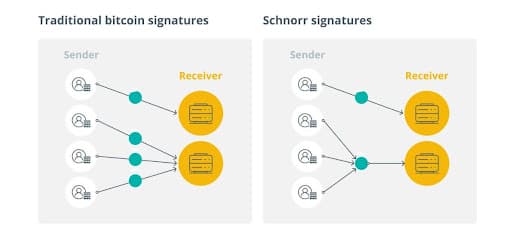
BIP 341
The second one, BIP 341, introduced two modifications that allow Bitcoin's scripting language to interpret Schnorr signatures and unlock its full potential. These were MAST (Merkelized Alternative Script Trees) and P2TR (Pay-to-Taproot).
MAST condenses transaction data into a single hash and hides any present conditions tied to the transactions' function. This way, it reduces transaction fees and memory usage, as well as offers the ability to perform complex transactions.
“(MAST) can help make smart contracts more efficient and private by only revealing the relevant parts of the contract when spending.” - taproot.watch
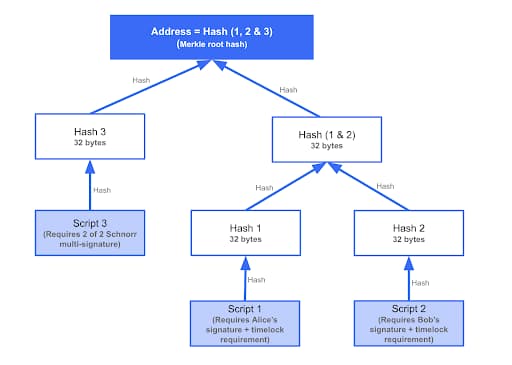
P2TR is the new address type introduced by the Taproot upgrade needed for transacting, which combines the functionality of the two previous Bitcoin address types P2PK and P2SH to offer a new method of spending Bitcoin to either a public key or multiple scripts.
Additionally, through the key aggregation of transactions (grouping used in Schnorr signatures), it makes all Taproot outputs appear similar, enhancing security.
Taproot is a 100 years softfork.
— Hampus (@hampus_s) June 3, 2021
Merging every contract and use-case under a single transaction type "Pay to Taproot" will in the long-run yield a more fungible and robust blockchain.
This is how you do it.
This is how you design a blockchain.
BIP 342
The last one was BIP 342, which introduced a new scripting language, Tapscript, to support the new functionalities introduced by Taproot from day one. This update also increases the flexibility of future script executions on the Bitcoin network.
Taproot Assets
Besides the above three proposals, Taproot also powers Taro, a protocol for issuing assets on the Bitcoin blockchain which is also referred to as Taproot Assets.
It is a protocol for issuing assets on Bitcoin developed by Lightning Labs, the same company that develops software powering the Lightning Network Layer 2 (the first L2 of Bitcoin).
Well, Taproot Assets isn’t the only impact Taproot and other upgrades on Bitcoin have brought. These innovations shaped Bitcoin into a more mature and experimental chain we never knew we needed and still promise to show us more in the future...
The Impact of Upgrades on Bitcoin's Future
As we already understand, Bitcoin holds undisputed security and decentralization and therefore sacrificed smart contract functionalities for them. But this compromise is slowly fading because one of the major impacts of upgrades on Bitcoin starts showing the support for smart contracts.
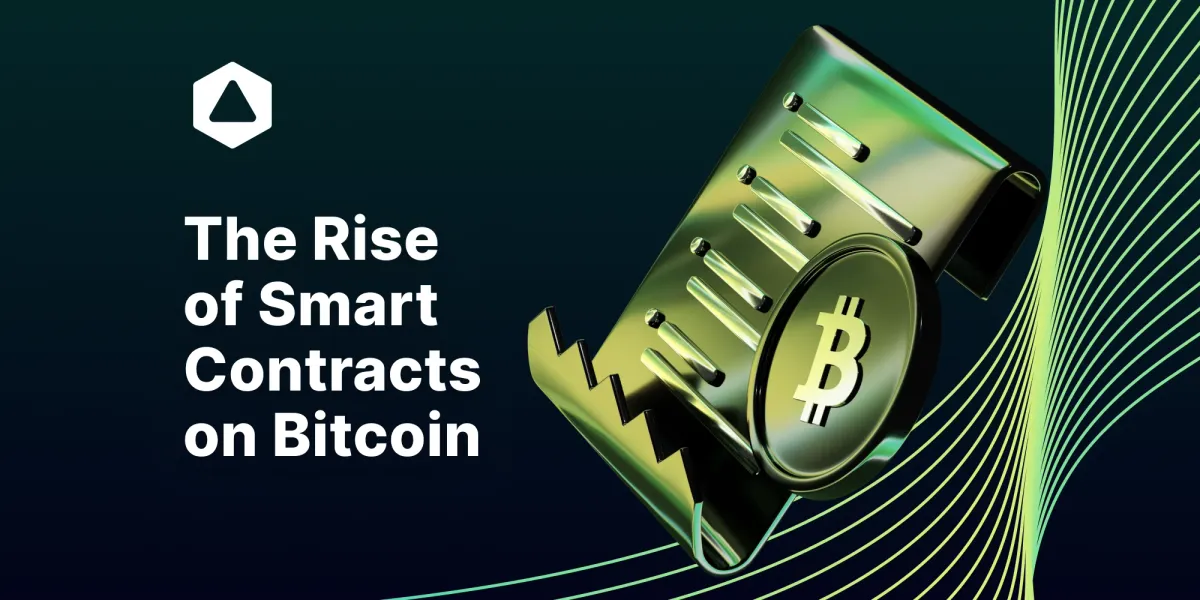
For instance, the Taproot upgrade introduces new proposals, allowing more flexibility in creating and using complex scripts. This positions Bitcoin as a future foundation for DeFi applications like lending, borrowing, and decentralized exchanges.
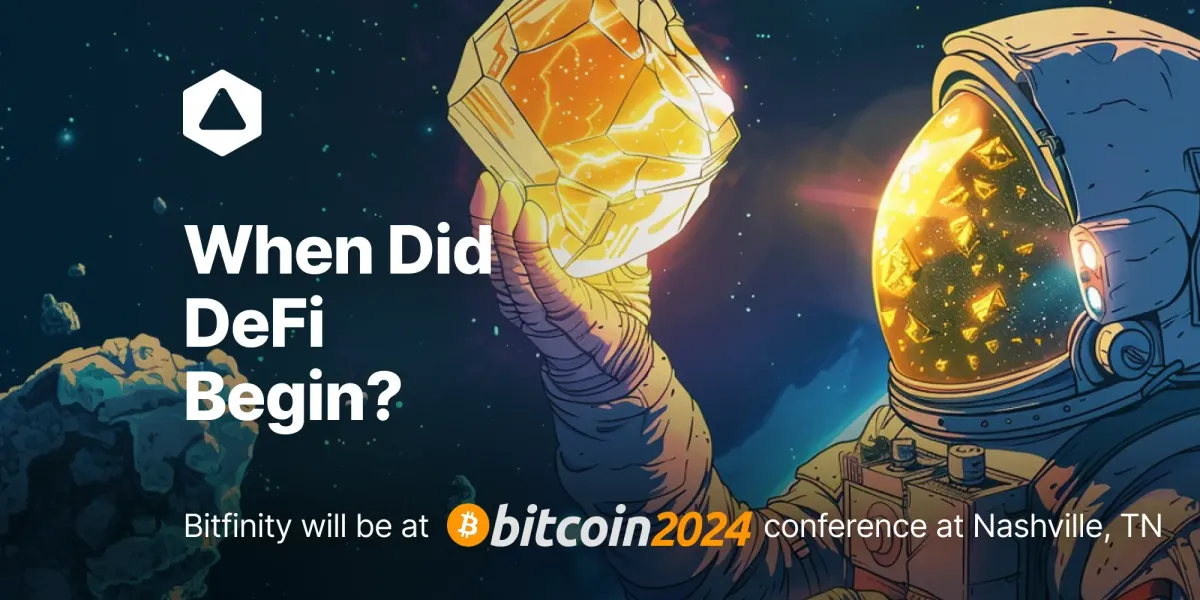
Issuing Bitcoin-Native Assets
Issuing assets on the Taproot Assets Protocol requires using its client on Bitcoin, where assets are created through Bitcoin transactions. When issuing an asset, you will pay a transaction fee in BTC.
Once the transaction is included in a block and verified, the asset is considered issued and can be transferred according to the rules defined at the time of its creation, as discussed above.
For example, the Ordinals protocol which pioneered NFTs within the Bitcoin blockchain, was made possible. As well as new assets that popped up, such as Runes, and BRC-20 tokens.
Interoperability is also another key impact on Bitcoin’s future. Several networks have come up to utilize these upgrades for example, as the Internet Computer incorporated Schnorr signatures making it possible for canisters (smart contracts on ICP) to securely hold and transfer assets across various blockchains.

It is only a matter of time when through platforms like Bitfinity, a new range of DeFi and blockchain applications are coming over to the Bitcoin network.
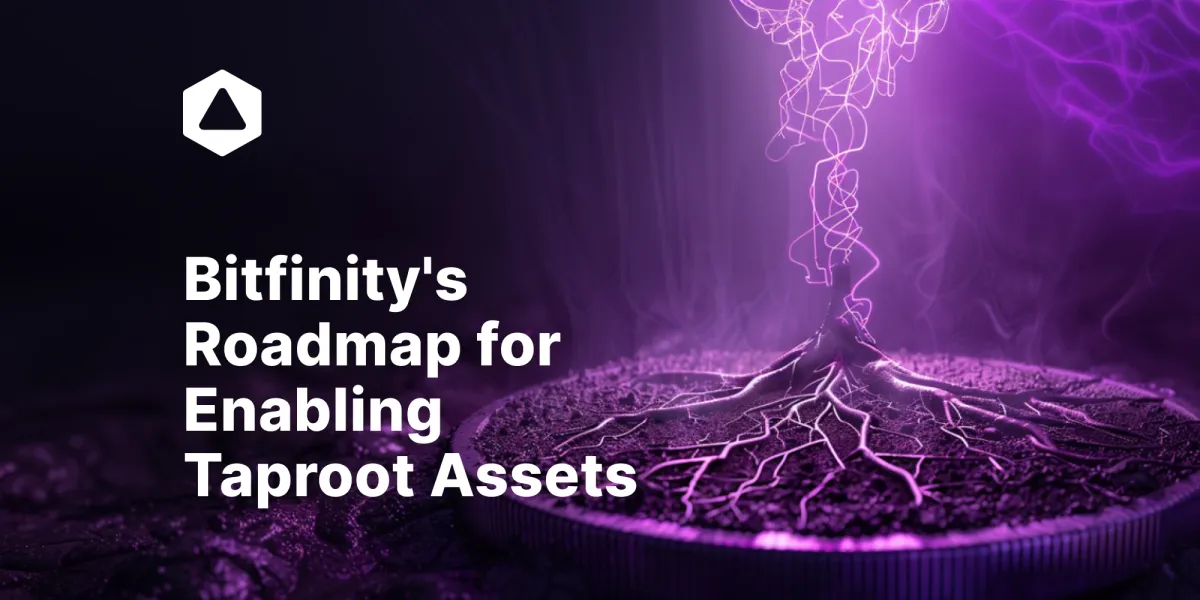
Final Thoughts
Bitcoin's upgrade journey has proven to be more than just technological improvements, it is literally a paradigm shift within a paradigm shift.
The true vision of Satoshi? We don't know, but it is a scenario that Satoshi himself would be proud of when he developed the first permissionless, decentralized network.
Through these upgrades, we have witnessed new developments like Ordinals, BRC-20 tokens, and Taproot Assets position themselves behind Bitcoin. But what we have seen is just the tip of the iceberg; the impact is yet to be seen.
Mainnet and TGE on 19th November.

Connect with Bitfinity Network
Bitfinity Wallet | Bitfinity Network | Twitter | Telegram | Discord | Github

*Important Disclaimer: The information provided on this website is for general informational purposes only and should not be considered financial or investment advice. While we strive for accuracy, Bitfinity makes no representations or warranties regarding the completeness, accuracy, or reliability of the content and is not responsible for any errors or omissions, or for any outcomes resulting from the use of this information. The content may include opinions and forward-looking statements that involve risks and uncertainties, and any reliance on this information is at your own risk.
External links are provided for convenience, and we recommend verifying information before taking any action. Bitfinity is not liable for any direct or indirect losses or damages arising from the use of this information.






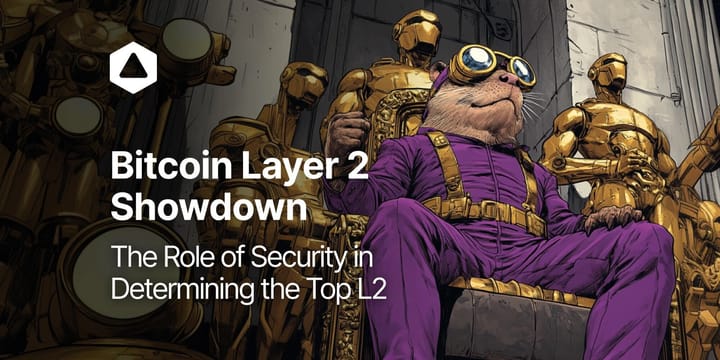
Comments ()